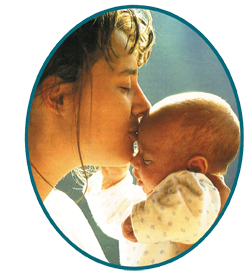| Advantages | Disadvantages |
|---|---|
| Natural, safe, harmless | Perception of ineffectiveness, misconceptions |
| Reliable, effective | Abstinence, decreased spontaneity |
| Inexpensive | Stigma associated with use |
| Easy to learn, versatile, educational | Effectiveness highly dependent on compliance |
| Immediately reversible | Requires agreement between man and woman |
| Acceptable by cultures and religions worldwide | Observations seem time consuming |
| Allows a woman to monitor changes in her menstrual cycle and overall health | Need to be cognizant of your body |
| No surgery, manipulation, or unhygienic methods | No protection against sexually transmitted diseases |
| Plan, achieve or avoid pregnancy | Sexual intercourse during periods of infertility may lower libido and lubrication |
| Restorative reproductive therapy, treat infertility | Lack of public awareness, resources and quality education |
| Environmentally friendly | Increased anxiety, fear of pregnancy |
Summary: NFP is not for everyone and it should be recommended based on the individual goals of each person. Understanding the advantages and limitations with NFP will help tailor your reproductive counselling based on what each person is looking for.
PROs
- Natural, safe, and no side effects. Many women will try hormonal contraceptives such as combined estrogens and progesterones before looking for an alternative such as NFP. The most common adverse effects from the contraceptive pill include: breakthrough bleeding/spotting, amenorrhea, nausea/vomiting, bloating, chloasma, breast tenderness, mood changes such as depression, and headache (e-CPS). Therefore NFP has no side effects, no drugs and may improve quality of life for patients with significant adverse events associated with contraceptive use.
- Effective (see efficacy website page) avoids pregnancy with 97.2-100% perfect use efficacy and 93.5-95.5% for combined method + incorrect use for the three mainstream NFP methods – Billings, Creighton & Sympto-Thermal. This is comparable to other mainstream contraceptives which range from 74-99.5% perfect use efficacy at avoiding pregnancy and 68-99.5% typical use efficacy rate.
- Easy to learn. With the help of an accredited teaching program taught by an experienced woman or couple, regular meetings and ongoing support for questions. A study by the World Health Organization showed that 93% of women recorded and interpretable mucus pattern and only 1.3% failed to learn how to interpret the changes in mucus characteristics (WHO, 1981). Even blind women have been known to learn the Billings Ovulation Method!
- Immediately reversible. The NFP methods can be adapted on a cycle-to-cycle basis to achieve or avoid pregnancy by having intercourse during the fertile phase to achieve pregnancy or having intercourse during the infertile phases to avoid pregnancy. The natural fertility cycle is maintained at all times. Hormonal contraceptives are designed to eliminate the menstrual cycle. However it is common for women taking an oral contraceptive to experience a lag period of six months to one year of irregular cycles until fertility is restored. In some cases, women may experience chronic infertility due to contraceptive use.
- Acceptable by all cultures and religions around the world. NFP has been established in China, India, Africa, Europe, and North America.
- Avoid or promote pregnancy. In addition to avoiding pregnancy, NFP has been showed to restore fertility to infertile couples with about 40% efficacy (Tham, 2012).
- Environmentally friendly. Reduce the amount of estrogens released into the environment, water system, food chain and exposure to younger generations.
CONs
- Misconceptions of low efficacy can me mitigated by using scientific evidence to demonstrate proven efficacy of modern NFP methods. Avoid low efficacy methods such as rhythm/calendar, basal body temperature, two days and standard days which are overly simplified, based on population-derived probability models and are retrospective instead of prospective at measuring fertility.
- Periodic abstinence may be challenging however abstinence is often a normal part of life (work, traveling, studying, illness, stress) and may improve relationships in other ways such as improved communication, intimacy, control and anticipation.
- Complexity and time requirements of methods can be overcome with effective teaching, technique practice, couple support and developing a routine.
- You need be aware of what your body is saying each day (mental effort).
- Effectiveness is maintained if “rules” are followed and couple does not take risks.
- No protection against sexually transmitted diseases is a concern when there is/was a history of multiple sex partners.
- There is a lack of understanding and awareness among both the public and health care professionals since methods are not promoted by pharmaceutical companies and a lack of financial incentives.
References: 1) Graves Gillian. e-Therapeutics+ [Internet]. Ottawa (ON): Canadian Pharmacists Association; c2013 [cited 2013 Jun 27]. Available from: http://www.e-therapeutics.ca. Also available in paper copy from the publisher. 2) World Health Organization Task Force on Methods for the Determination of the Fertile Period. A prospective Multicentric trial of the ovulation method of natural family planning. I. The teaching phase. Fertil Steril 36:152-158, 1981. 3) Tham E, Schliep K, Stanford J. Natural Procreative Technology for Infertility and Recurrent Miscarriage: Outcomes in a Canadian Family Practice. Can Fam Physician. 2012;58(5):267-74.
All information on this topic is provided by http://nfpforpharmacists.weebly.com/pros-and-cons.html with permission.




